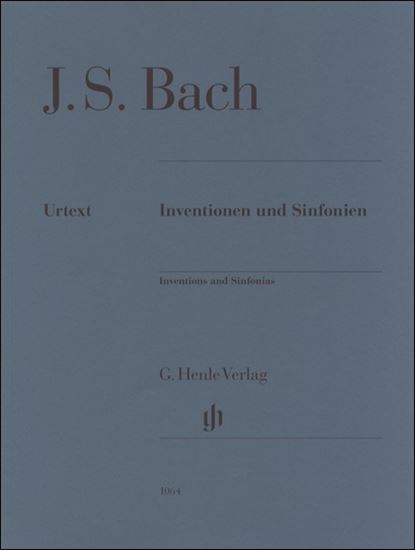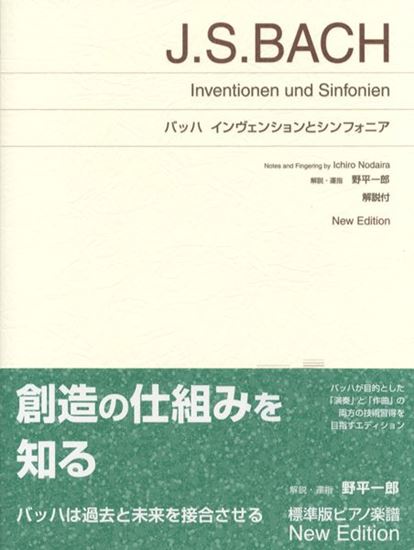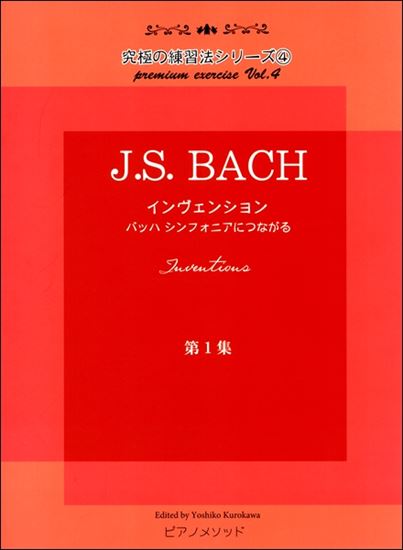Bach, Johann Sebastian : Invention Nr.14 B-Dur BWV 785
Work Overview
Genre:pieces
Total Playing Time:1 min 20 sec
Copyright:Public Domain
Commentary (3)
Author : Takamatsu, Yusuke
Last Updated: September 18, 2020
[Open]
Author : Takamatsu, Yusuke
B-flat major, 4/4 time.
It possesses a festive character. The theme is fundamentally based on arpeggios, with runs incorporating 32nd-note passing tones providing ornamentation.
The composition is structured in four parts. In the first section (measures 1-5), the theme is presented. Following this, in the second section (measures 6-11), the theme is presented in the dominant key through voice exchange, while modulating. The third section (measures 12-16) develops a canon where the upper voice pursues the lower voice. Finally, the fourth section (measures 16-20) features a canonic restatement of the theme.
Author : Hayashikawa, Takashi
Last Updated: March 15, 2018
[Open]
Author : Hayashikawa, Takashi
The entire piece is constructed from motive 'a' presented at the opening and its inversion.
The recapitulation of the theme, beginning from the third beat of measure 16, is designated as 'recapitulation (in canon style)' because the subsequent voices do not strictly imitate in certain passages and the imitative pursuit ceases midway.
Musical example provided by Bärenreiter Verlag.
Author : Ooi, Kazurou
Last Updated: March 12, 2018
[Open]
Author : Ooi, Kazurou
No. 14 in B-flat Major
Bach's B-flat major differs slightly from the innocent character of C major, adding an air of elegance and nobility. If C major's color is white, B-flat major might be silver. Even in works like the Partitas, the color of B-flat major is unique.
While this Invention can be played in various ways, it doesn't seem overly dynamic. Judging from its calm atmosphere, I believe it should be played moderato with legato, setting a tempo that allows for a comfortable speed for the 32nd notes.
Analysis: Measures 1-5
Let's analyze it from the beginning. In measure 1, let's assume the right-hand subject begins after one 16th rest on beat 1 and ends on G, the first note of measure 2. In that case, this single subject starts on B, reaches the B an octave higher, and then descends again. Dynamically, it would be good to naturally crescendo slightly towards beats 2-3.
Measure 2. Upon examination, we find a very similar melodic shape to measure 1. However, in measure 2, the highest note only reaches E-flat, and the lowest note descends to C on beat 4. Consequently, the dynamic should naturally be softer than in measure 1.
Measure 3. The difference between beats 1-2 and measure 3 lies in the exchange of melodic shapes. Beats 1-2 are almost identical to measures 1-2, but the melodic shape of beats 3-4 is inverted, as if mirrored from measures 1-2. Another perspective is to consider the melodic shape of beats 3-4 as a transposition of beats 1-2 to a higher position. Therefore, a crescendo towards beat 4 would be appropriate.
A sequence of one-beat units begins between measures 4-5. In this case, as it gradually descends, a diminuendo would be suitable. It finally reaches F major.
Analysis: Measures 6-11
Measures 6-8. Exactly the same events occur as in measures 1-3. However, the left hand and right hand are exchanged.
Measures 9-11. A sequence of one-measure units begins. Although it descends, here we focus on the harmony. Measure 9, beats 1-2 are a major triad, beat 3 is a diminished seventh chord, beat 4 is a dominant seventh. Measure 10, beats 1-2 are a minor triad, beats 3-4 are a dominant seventh chord. Measure 11, beats 1-2 are a minor triad, beat 3 is a diminished seventh chord, beat 4 is a dominant seventh chord.
Since each measure has a completely different mood, bring out their respective colors.
Analysis: Measures 12-16
Measure 12 is one of the softest parts in the piece. From here, through a sequence, it reaches beat 4 of measure 13.
Subsequently, from measure 14 to beat 3 of measure 16, it gradually descends through a sequence, so apply a diminuendo, aiming for beat 3 of measure 16 as the goal. One caution here: please be careful not to accent the downbeats of each measure and each beat, specifically the parts written as 16th notes on the downbeats. These parts are the last notes of the preceding beat.
In measure 16, beat 3, the right and left hands overlap. Use the pedal to ensure the quarter note is not cut short. However, since the left hand must play the same note again, extend this D played by the left hand extra long, making it sound as if the right hand's quarter note D is sustained.
Concluding Thought: Measure 20
Now, what needs consideration is the whole note + fermata in measure 20. Even if the fermata is extended by only 1.5 times its length, you'll realize that counting this whole note properly and adding the fermata results in a considerably long note. While it should certainly be sustained properly, this is the only part of this Invention that I find perplexing. What are your thoughts?
PTNA & Partner Channel Videos(9items) View More
Sheet MusicView More
Scores List (37)
![やさしいピアノ名曲集3[発表会用/CD付]時代別編纂 - 楽譜表紙画像](https://ptna-assets.s3.ap-northeast-1.amazonaws.com/enc/books/45.jpg)
(株)エー・ティ・エヌ

カワイ出版

(株)ヤマハミュージックエンタテインメントホールディングス
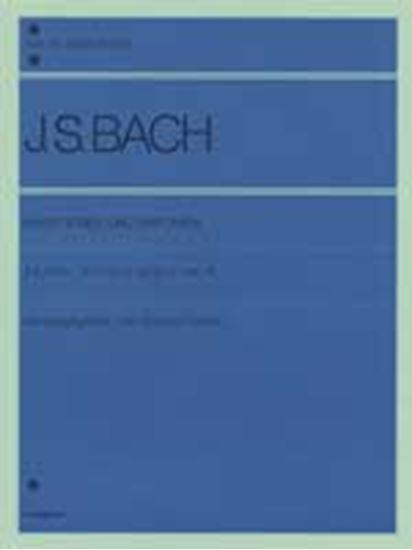
(株)全音楽譜出版社
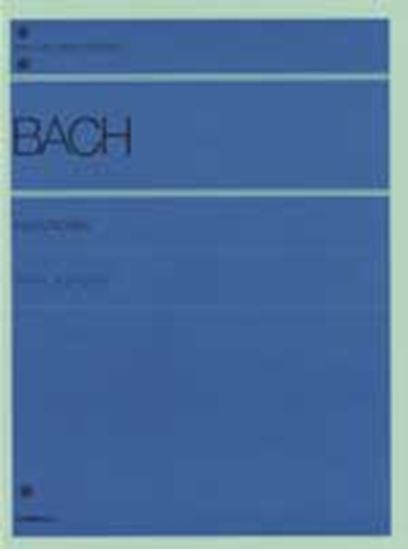
(株)全音楽譜出版社

(株)ドレミ楽譜出版社

(株)音楽之友社

(株)全音楽譜出版社

(株)音楽之友社

(株)音楽之友社

(株)ドレミ楽譜出版社

(株)ドレミ楽譜出版社

(株)ドレミ楽譜出版社

(株)ドレミ楽譜出版社

カワイ出版

(株)渓水社

(株)音楽之友社

(株)全音楽譜出版社

(株)エー・ティ・エヌ

(株)全音楽譜出版社

カワイ出版

(株)音楽之友社

(株)音楽之友社

(株)東音企画(バスティン)

(株)ヤマハミュージックエンタテインメントホールディングス

Neil A. Kjos Music Company














